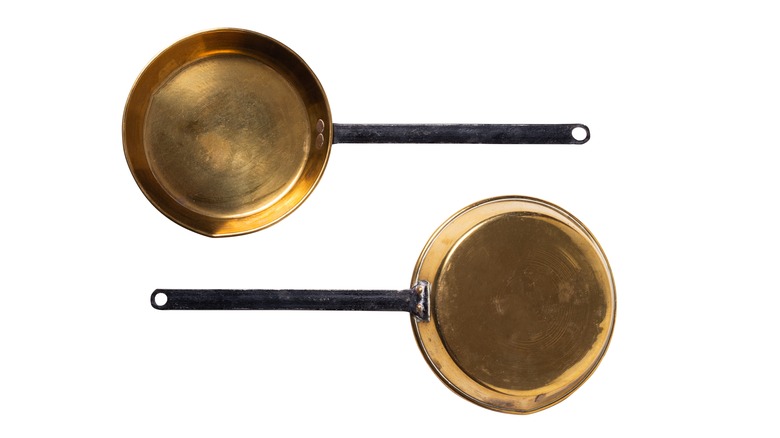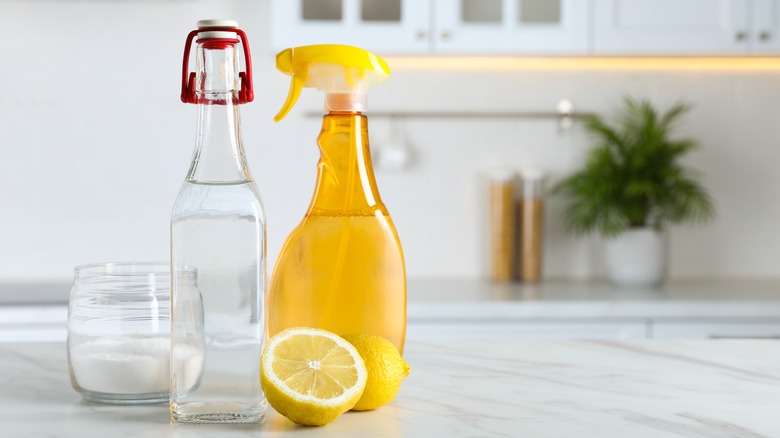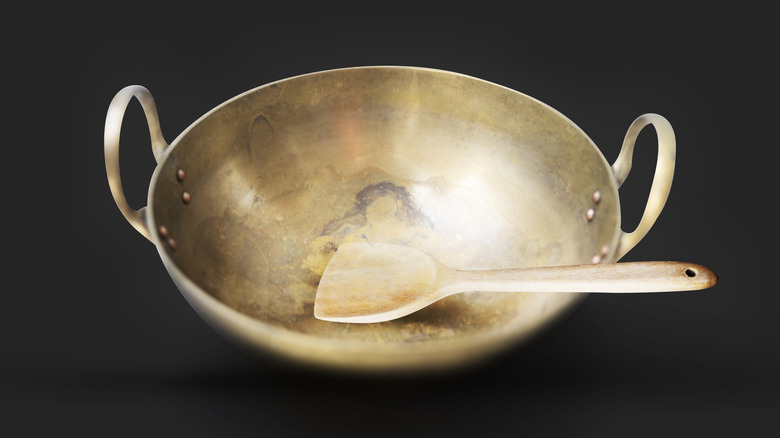The Efficient Way To Clean Brass Pans And Make Them Shine
The way people talk about it, you'd think that cast iron and stainless steel pans are the only two types on the market. But there are plenty of other options, and one of the best kinds available is brass. Made from an alloy composed of copper and zinc, the use of brass accouterments in relation to cooking can be traced back thousands of years, and it's common knowledge that the metal itself is able to conduct heat evenly and quickly.
Simply put, brass cookware made today looks, well, seriously cool: It's pretty notable for its burnished exterior, an aesthetic that can really bring a rustic quality to your kitchen. However, we'd be remiss if we didn't mention that brass pans have their drawbacks. The cleaning and seasoning process isn't as long (nor as ferociously litigated) for brass cookware as it is for, say, cast iron; nor is cleaning brass pans quite as painless as it is for cleaning stainless steel ones. Unlike either of those materials, the main thing you're combating when it comes to brass here is tarnish.
Luckily, there are ways to combat that. After you use a magnet to figure out whether you're dealing with solid brass or brass-coated pans (a magnet will stick to brass-coated, in which case you should scrub very gently and carefully so as to avoid wearing off the coating), you're ready to get down to business.
There are two methods for cleaning brass pans, but both are broadly similar
The two primary cleaning methods for brass cookware involve washing them with soap and water and then working some magic with baking soda, but that's where they diverge. The first method is likely to be familiar to anyone who's ever had to clean an outdoor grill – it involves the old standby mixture of white vinegar and baking soda. After it stops fizzing, the resulting paste can be used as a nontoxic cleaning material. Brush it onto the brass, let it sit for at least half an hour (but no longer than an hour), then gently scrub it off. If the tarnish is bad enough, you might have to do this multiple times.
The second method, otherwise known around these parts as the "lemon method," is mostly the same as far as scrubbing — it just differs in what materials you use during said scrubbing. Take half a cut lemon, dip it in baking soda (you can also use salt, but as a coarser material you're going to want to keep it away from brass-coated pans), then use the resulting fruit to gently scrub the tarnish away. Again, let it sit for half an hour (but not longer than an hour) and you're good to go.
Brass pans can theoretically be detrimental to your health if you don't take care of them, though
An important note about brass cooking vessels is they do potentially come with some health concerns. While small amounts of copper are fine, large amounts can make you sick, so brass pans typically come coated in a thin layer of material designed to keep the food from coming in direct contact with the metal itself. This is mainly a problem with pots and pans that have been exposed to highly acidic foods like lemon juice or tomato sauce, or that have been improperly stored. The key is to clean them immediately, dry them immediately, and never store them anywhere water could collect in or on them.
Ultimately, using brass and copper pans is fine as long as you treat them with the care they deserve — ideally, the same as you would for other sorts of higher-quality pots and pans. As long as you don't run them through the dishwasher just because you don't feel like cleaning them, you should be just fine.


